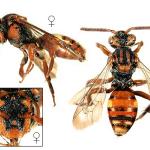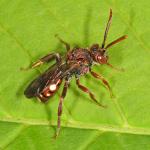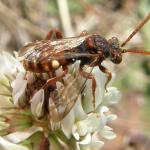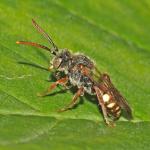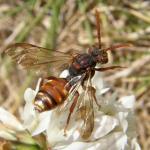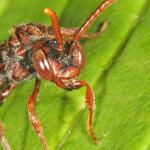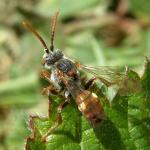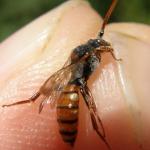Apis hillana Kirby, 1802, Apis ochrostoma_homonym Kirby, 1802, Nomada vidua Smith, 1844, Nomada punctiscuta Thomson, 1870, Nomada simillima Pérez, 1913, Nomada dzieduszyckii Noskiewicz, 1924
A rather small, predominantly red Nomada with yellow spots on the gastral tergites.
Widely but very locally distributed throughout much of Britain as far north as Elgin. Also recorded from Ireland in O’Connor et al. (2009). The only Channel Island record is from Sark (Beavis, 2000). Not a common bee but very occasionally quite numerous where found.
In mainland Europe, the range of this species extends from Fennoscandia to Turkey. It has also been collected in Morocco.
This species is not regarded as scarce or threatened.
Flower-rich grasslands (particularly chalk downs) supporting populations of Andrena wilkella (Kirby). It has also been reported from woodland on clay soils, the coast and a private garden.
Univoltine; mid May to mid July, exceptionally August (perhaps as a partial second brood).
A cleptoparasite of Andrena wilkella (Perkins, 1919, 1924; Stöckhert, 1933; Spooner, 1946). It may also attack A. fucata Smith (Stöckhert, 1933).
Bulbous buttercup, white bryony, bell heather, raspberry, wood avens, bird’s-foot trefoil, wood spurge, bogbean, germander speedwell, ragwort and dandelion.
No data available.
2012


